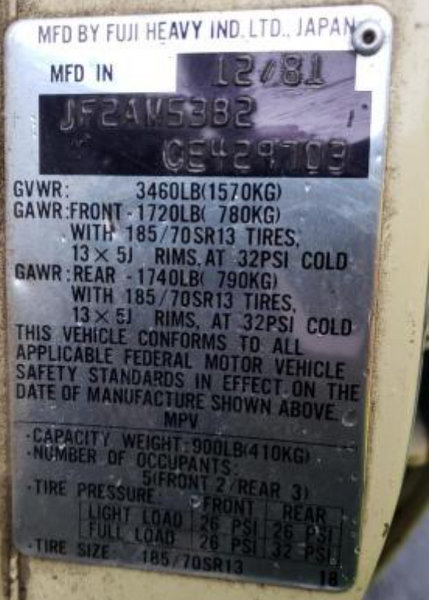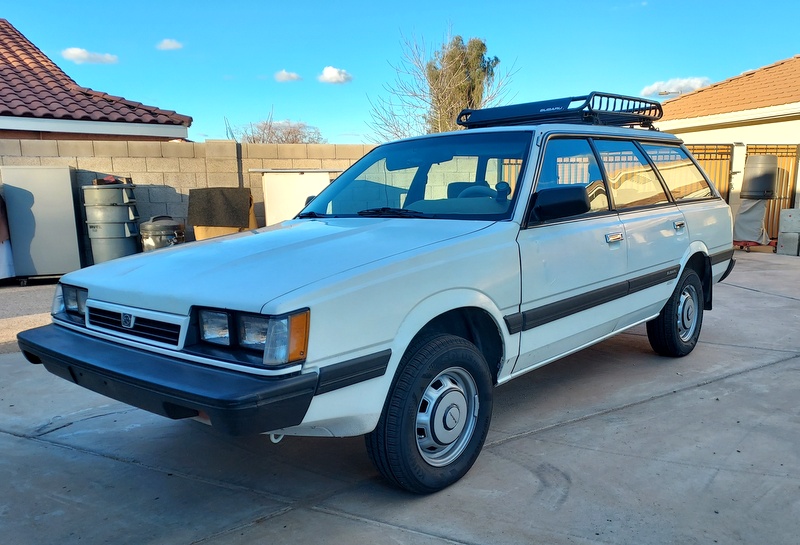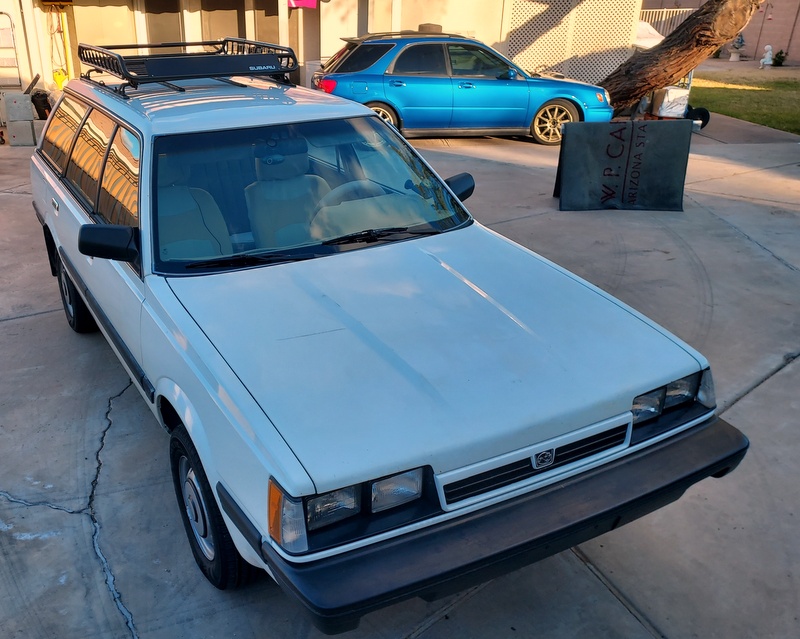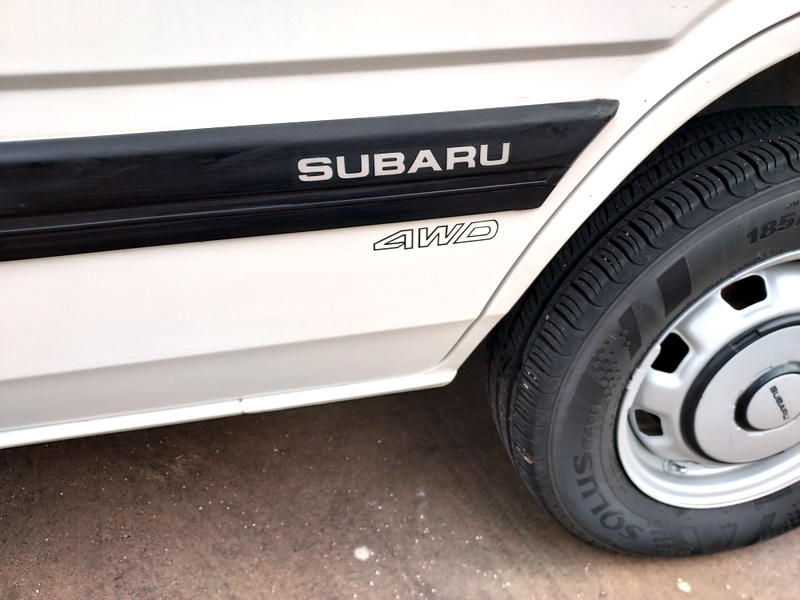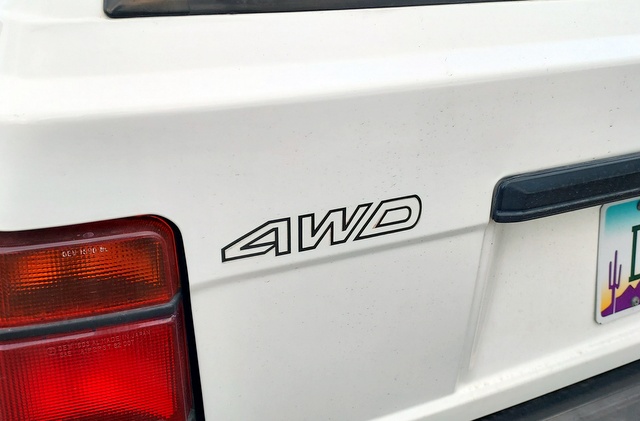
azdave
Members-
Posts
177 -
Joined
-
Last visited
-
Days Won
14
Content Type
Profiles
Forums
Gallery
Store
Everything posted by azdave
-
I don't use specially formulated "break-in" oils. Just the conventional version of what I'll run normally after break-in. 500-1000 miles before changing to anything synthetic should be sufficient. Sometimes I drain the oil at 250 miles or so just to have a look at it and if nothing scary is seen, I'll pour it back in the engine (filtering through a very fine mesh screen) and run another 500 miles on it before the first drain and refill with the oil I plan to use long-term.
-
That doesn't mean they might not find the error and cancel it later. I had a similar situation where I went to DMV in-person for a used car purchase and was given a clear tile, registration and tags. 3 months later, DMV sent me a notice that the car actually had a salvage title, tags were revoked and I had 14 days to surrender the vehicle to a state police inspection or never drive it again.
-
Winter lows around here rarely make it to freezing so it is not a big deal to be without cabin heat. I have 3 other classic cars I drive during the winter that haven't had heat for years. When the time comes that I feel like ripping the whole dash out, I'll do a solid repair that will last even the next owner. I'll find an all metal core and make it work. I'll bet that even a small aftermarket oil cooler would be a good candidate to modify. I have several of those around already with different tank configurations.
-
I can't image those parts or repairs would be within my stingy budget but thanks for the links. I have the skills to adapt another heater core if I need to and it looks like that might be what will happen once I get it apart.
-
The leaking heater core has been bypassed and I likely won't need any heat or defrosters again until next winter so I'm driving it for now and will schedule a fix later. Too many other projects. The repaired aftermarket radiator went back in and has been leak-free for about a month so fingers crossed. We've already been seeing temps in the 80's so time will tell if it makes it through the summer. I found a nice cargo bag at a thrift store and used it over the weekend. It rolls up and fits perfectly in the storage compartment in the floor so a nice fit and under $10. We stopped at a local car show on the way home Saturday and got quite a few people checking out the wagon. https://photos.app.goo.gl/z6vpYcdcHgQgX3C1A
-
With multiple occurrences during a single driving event then I doubt it is a bad sender. Do you see any other signs that it is actually running hot or is it only because what the gauge reports? Do you hear detonation or pinging or any other signs that it is truly that hot? Do you have access to a cheap BBQ thermometer? You could wrap the sensor around a heater hose and then watch the temps while you drive as a second way to confirm that the temps are really rising and falling that much. I use a unit that I found at Wal-Mart for $15. This one has 2 channels so you could put the other sensor on the radiator hose to document the temps there too. I sometimes put the sensor on the inlet and outlet hose of the radiator just to observe the temperature drop I'm getting while city or freeway driving. https://www.amazon.com/Wireless-Thermometer-Digital-Instant-Grilling/dp/B093KNZ3X9/ref=sr_1_17?crid=2QYAI5WOYEC4E&keywords=remote+bbq+thermometer&qid=1677766260&sprefix=remote+bbq+therm%2Caps%2C144&sr=8-17
-
I use Stabil 360 if I know it will be more than 3-6 months until the next drive or tank refill. Between 9-12 months I'll usually siphon down the tank and load the old gas into a daily driver and then fill the stored vehicle with fresh gas and run it for a 10-15 minutes. Most of the cars I store long-term are air-cooled so no issues with engine coolant and corrosion worries, only stagnant fuel.
-
I've had that exact issue on an 87 Mazda B2000. It would only happen after the engine had cooled fully overnight and it would only do it one time during that trip and rarely ever again that day unless the engine had fully cooled. The needle would sweep slowly up as expected but then continue past normal up to almost the overheat mark and then suddenly drop to normal readings in about 1 second. The engine could not have really been overheating as it happened before enough miles had been driven and the heater was only putting out medium temperature air. After several burping procedures and a new T-stat the fix ended up being a new temp sensor. Do you see your gauge needle move like that over and over on a single trip or only during engine warm up like I experienced?
-
Timing is everything. I just bought a 2003 WRX dash clock and undamaged bezel on ebay for $14 including shipping. The seller had pulled it many years ago and stored it when he installed an aftermarket gauge pod. Lucky find for me. Thanks for the link to the used Subie parts source. Could come in handy one day.
-
I don't know your engine platform so ignore this if I'm way off base but I had a bad throttle position sensor on my 87 EA82. It caused a similar intermittent stumble just off of idle because it was providing bad position values in part of the range. When the throttle was at rest, an idle switch was on so no problems showed. As soon as the throttle shaft turned just a little, the idle switch turned off and the wiper hit a bad section on the circuit. Once past that bad section of the circuit, it ran fine. The problem was most noticeable when gently accelerating from a full stop. If I jumped on the throttle it was not noticed at all. I have an old analog Simpson 260 meter and when reading the resistance across the TPS and manually turning the throttle shaft, the meter's needle jumped all over the place instead of smoothly sweeping back and forth.
-
82 4WD GL wagon at Copart auction
azdave replied to azdave's topic in Old Gen.: 80's GL/DL/XT/Loyales...
Glad you saved it! Did you find out why it was listed as having mechanical damage? -
Do you know for sure it is running cool or is that just what the gauge tells you? I've had sensors that looked fine but had moisture inside the plastic housing giving me all kinds of erroneous readings. It's obvious your engine got hot when it boiled over but after you changed the thermostat you say that is no longer an issue. So how do you know it is cooler than normal unless you have a second data point to confirm? In my case, I got a cheap remote BBQ thermostat temp gauge and taped the sensor tip around the heater hose. While driving, I could see the heater hose temperature rise and stay fairly steady while the dash temp gauge wandered all over the place during a 30-minute drive. A gauge like this is what I used. https://www.amazon.com/ThermoPro-Wireless-Digital-Thermometer-Grilling/dp/B014DAVCP4/ref=sr_1_50?crid=36MF7MSFMYGK&keywords=remote+temperature+monitor+bbq&qid=1675857591&sprefix=remote+temperature+monitor+bbq%2Caps%2C112&sr=8-50
-
Driveline angles 81' wagon
azdave replied to Silverbull3t's topic in Old Gen.: 80's GL/DL/XT/Loyales...
Awesome! I'm far, far away from being a Subie expert but I can look at an issue with basic logic. Why would the factory go to the trouble and expense of using 2-piece drive shaft design when a single shaft would have been cheaper and easier? I look at my own 4WD 87 DL wagon or even my 2WD 87 Mazda B2000. Both use 2-piece drive shafts with a center carrier bearing which at first glance just seem like more u-joints and bearings that are going to fail one day. But here comes logic again. Why go to all that trouble? I'll guarantee you the factories had to solve a problem. Why build that extra cost and complexity into a high-production, low-margin vehicle unless you had no other option? Google can find all kinds of reasons why a 2-piece shaft might be better than 1-piece and my guess in this case it was to reduce noise, vibration and harshness (NVH). It could also have been a driveline drop issue on a 4WD vehicle with the exhaust so close and wheel drop in the rear possible leading to interference. Which one is the reason here does not matter to me. Engineers are constantly pressured to reduce cost and complexity so nothing stays in production long-term if it isn't worth the trouble and guess what? Plenty of new vehicles still come with factory 2-piece driveshafts. -
XT6 1988 where is the flasher relay?
azdave replied to xXArchusXx's topic in Old Gen.: 80's GL/DL/XT/Loyales...
You didn't change to any LED bulbs did you? Also this info seems to agree with Ruparts suggestion about low current draw from bad bulbs, wiring or contacts. https://ricksfreeautorepairadvice.com/subaru-turn-signal-blinking-fast/ -
82 4WD GL wagon at Copart auction
azdave replied to azdave's topic in Old Gen.: 80's GL/DL/XT/Loyales...
It appears that you can't directly review final auction results unless you pay to join Copart. I found one of those many "auction results" consolidation websites that scrapes info from various auction sites and it shows it sold for $675 with additional $238 in auction fees. I could be completely wrong but that's what I found online through a 3rd party site. -
82 4WD GL wagon at Copart auction
azdave replied to azdave's topic in Old Gen.: 80's GL/DL/XT/Loyales...
-
Thanks for the insight on the repairs and cores. I haven't seen any heater cores available, let alone an all-metal solution. I find them listed for sale many places but when I actually move the part to the shopping cart it becomes "unavailable". I figure I will do a bypass for now so I can keep driving while I search for a solution. I might have to create my own with help from the local radiator shop.
-
Got the new roof rack installed and digging it so far. I did a test run on the freeway last night to see if there were any wind whistles or other distracting noises and I didn't hear anything so it probably will stay there most of the time. I was "rewarded" for my work when I turned on the heater last night after the wife and I were retuning home from dinner and got a blast of humidity and antifreeze odor from the outlets. Really? As expected, I found an area of antifreeze dripping under the dash at the bottom of the heater box so time to research how hard that's going to be to repair. I took a quick look online this morning and don't see anyone selling replacement heater cores either. I'm guessing it is all brass so maybe there is hope I can repair it.
-
82 4WD GL wagon at Copart auction
azdave replied to azdave's topic in Old Gen.: 80's GL/DL/XT/Loyales...
There's a $300 bid on it with about 1 day to go so maybe it will be saved. -
82 4WD GL wagon at Copart auction
azdave replied to azdave's topic in Old Gen.: 80's GL/DL/XT/Loyales...
Pass the word. The auction is back open again for 5 more days. This is no reserve and the starting bid is $200 with no bids yet. I hope someone can save it. I'm at my limit with 15 vehicles and three trailers at home. The ad says it runs and drives but still could have a blown head gasket or fried clutch. https://www.copart.com/lot/72538352/clean-title-1982-subaru-gl-4wd-ca-hayward -
82 4WD GL wagon at Copart auction
azdave replied to azdave's topic in Old Gen.: 80's GL/DL/XT/Loyales...
Not sure what is up with that but guessing the auction ended yesterday with no bids and they will try again soon. The auction was definitely active yesterday morning with 7 hours to go. It was also being discussed for the same reason on FB groups since there were no bids. I saved a wider screen shot from when it was an active auction. I hope they give it another try and not scrap it. -
I saw this on FB today. Anyone able to save this 82 4WD GL manual wagon at Copart in Hayward, California? Ad says it has mechanical damage. Sure looks good and I don't see any bids nor a reserve price. I put the link here figuring the right people would see it here more readily than in the sales forum. https://www.copart.com/lot/72538352/clean-title-1982-subaru-gl-4wd-ca-hayward
-
To keep the off-road 4WD theme consistent, I always thought the side of my wagon should display an OEM looking "4WD" logo that matched the ones on the tail gate and the mud flaps. It's been raining here so I spent some time indoors on my cheap eBay laser cutter and came up with this graphic for the left and right rear doors. I also made one to go over the rear logo as it was very sun bleached. It's not perfect but neither am I.
-
I don't use the carrier box that often but don't like taking it on and off and then storing it some place. I actually have filled the back of the wagon several times recently doing supply runs for work (bulky, lightweight stuff) and needed more room. I think a rack would better serve me and can stay there when it is empty with little effect. It won't need stored off-season and also is easier to load the top since what I put up there doesn't really need rain or theft protection. I'm ordering one of these and giving it a try. The cargo box is up for sale locally for about what it will cost to buy a rack.
-
Just one more online repair thread for someone to discover in a search and read completely to the end only to find out it was never resolved. OP has not posted since last April so I think we can put a fork in this one.




